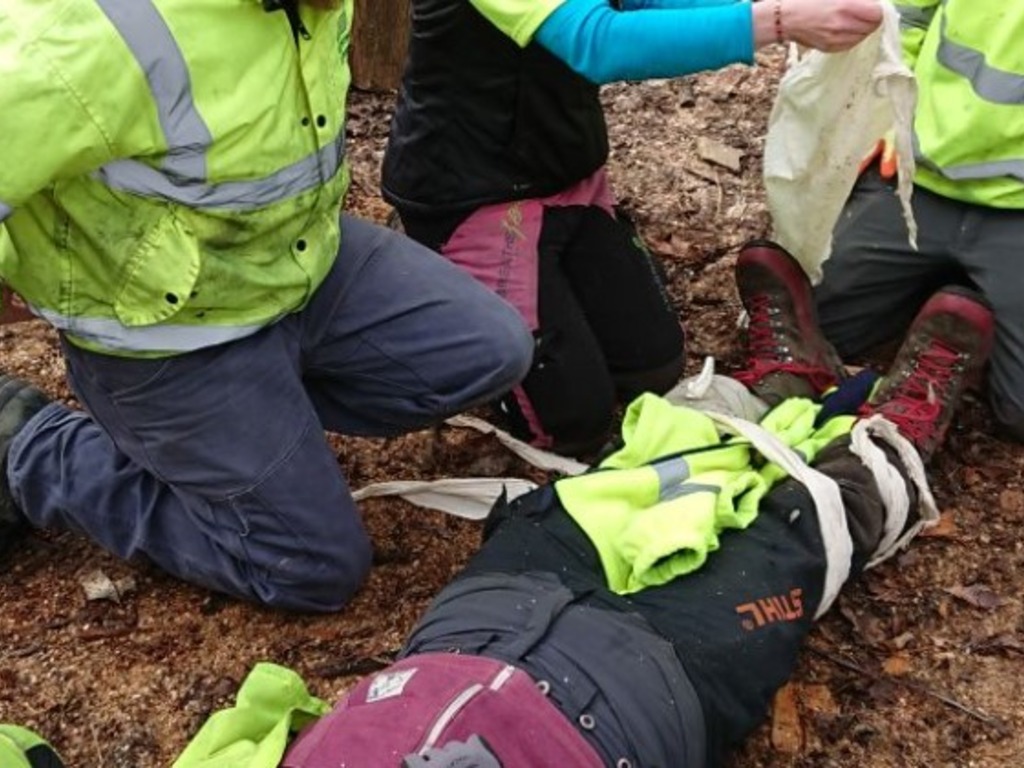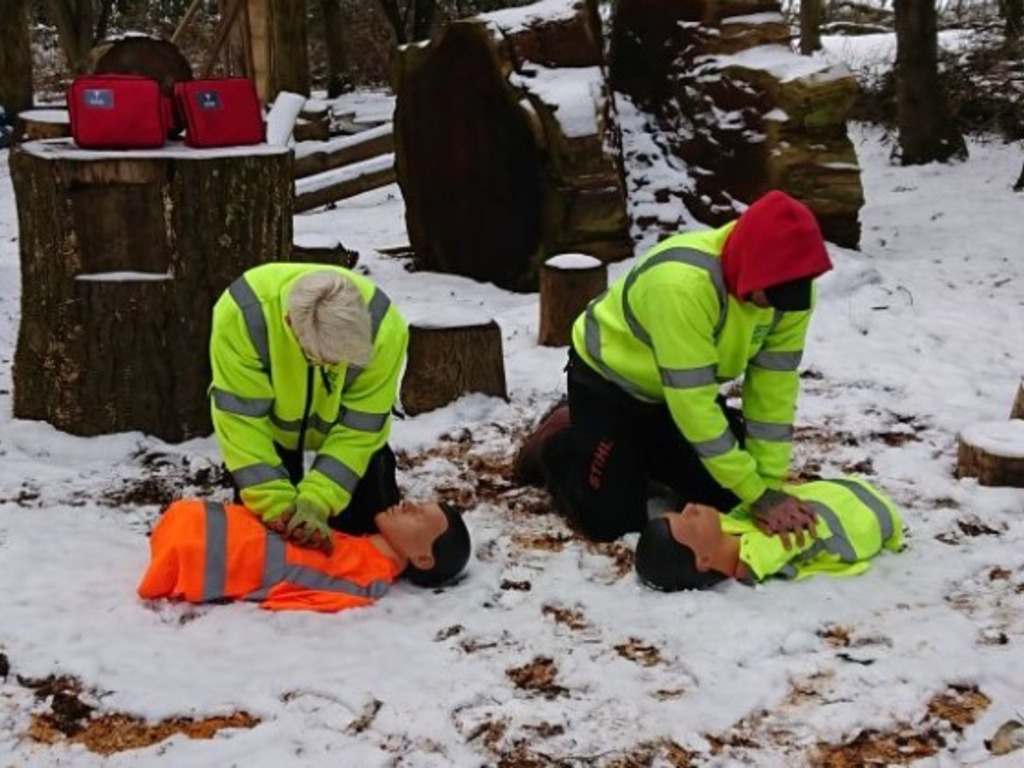The need for specialist first aid training.
The average adult has about six litres of blood in the body, pumped around in a minute. With a cut to the brachial artery in the up aspect of the arm you will bleed out at one litre of blood every minute.
This doesn't leave you much time to do something about the bleeding if you receive a cut from a chainsaw, roughly three minutes at the most. So what can you do?
Due to the hazardous nature of your work Arborists require specialist first aid training.
In the news we have seen several articles about arborists who have been seriously injured or lost their lives whilst working in the industry.
So, you have to ask yourself, can you afford not to have the right specialist first aid training?
A training package covering the following subjects is the best way forward:
Trauma kits used in the industry.
Calling In the Emergency Services.
Medical conditions and causes of unconsciousness.
Treatment of shock including anaphylaxis, toxic and hypovolimic.
CPR including use of an AED.
Catastrophic Bleed Management including treatment of chainsaw injuries.
Use of CAT Tourniquet, Emergency Care Bandages and use of Haemostatic Agents.
Recovery positions.
Climatic injuries.
Burns and poisons including plants.
Suspension Trauma.
Fractures and Spinal injuries.
Training should include theory and realistic practical exercises so you get hands on training tailored to your needs rather than simple theory. I would expect an in depth course of this nature to take at least two days.
A level three emergency first aid course approved by OFQUAL and either the Catastrophic Bleed Management or the +F, forestry qualification are the best qualifications to go for, but make sure the courses are accredited by an awarding body.
When choosing the course it’s a good idea to ask about the back ground of the instructors, ex-military instructors are highly qualified with plenty of experience. Trainers holding a qualification in Catastrophic Bleed Management are the best as they have been trained to use the CAT tourniquet, emergency care bandages and the correct use of haemostatic agents.
Any training you choose must ensure you come away with the confidence and ability to apply emergency first aid if a severe trauma situation arises.
If one day you find yourself wishing you’d had this type of training it’s probably too late.
Our Next Blog: One Handed Application Of an Emergency Care Bandage and Gen 7 CAT Tourniquet.
Thanks and be safe,
Julian
Julian Woodall is Training Director for Medic Services International, is ex British Army, qualified as a remote areas medic, was first aid instructor for the Royal Navy from 2008 until 2012 and now works in the UK and overseas training companies in remote areas first aid, he has been training arborists since 2013.
For any information you may have about courses email julian@medicservicesinternational.com
Check out the website www.medicservicesinternational.com






